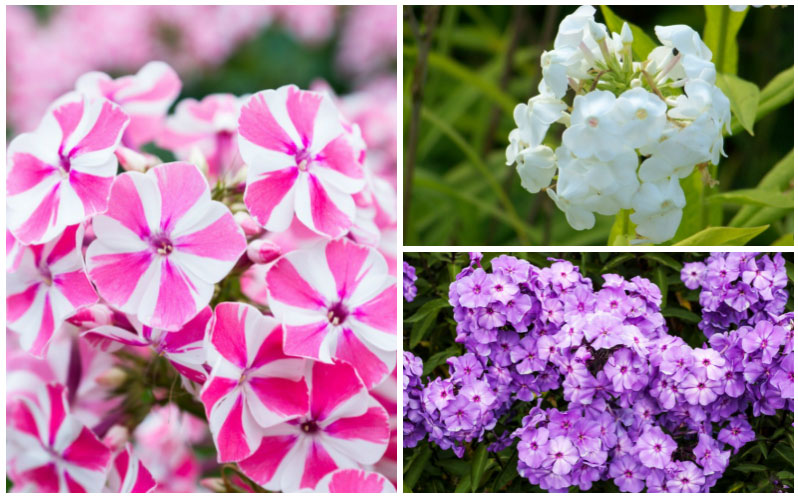
Creeping phlox, also known as moss phlox, is a low-maintenance perennial groundcover. They provide vibrant and pastel blooms in the spring and work well as camouflage for challenging terrain.
Since they are hardy and easy to maintain, creeping phlox work well in rocky terrains and tough soil. They are surprisingly versatile with several possibilities, including use in planters or as a cascading plant. Creeping phlox can also add a pop of color to walkways and as a border for a flowerbed.
Creeping phlox bloom in the spring for several weeks, but the needle-like foliage remains green most of the year. The blooms can be white, pink, lavender, red, or a bluish-purple color and resemble small stars.
It’s best to plant creeping phlox in the spring, preferably in areas with full sun to partial shade. They require minimal maintenance but need to be watered during the heat of summer and cut back in the fall to encourage healthy growth.
| Botanical Name: | Phlox Subulata (Family: Polemoniaceae) |
| Common Name(s): | Creeping Phlox, Moss Phlox |
| Plant Type: | Semi-evergreen perennial |
| Mature Size: | 4 to 6 inches |
| Sun Exposure: | Full Sun to Partial Shade |
| Water Needs: | Minimal |
| Soil Type: | Moist, well-drained soil |
| Soil pH: | 6.0 to 8.0 (moderately acidic to slightly alkaline) |
| Bloom Time: | Spring |
| Maintenance: | Low |
| Flower Color: | White, pink, red, lavender, bluish-purple |
| Hardiness Zones: | 3B through 10 (USDA) |
| Toxicity: | non-toxic |
Creeping Phlox Care
Creeping phlox fares well in most areas because it’s a hardy plant that requires little maintenance. Serving as ground cover and erosion control, the bushy foliage is semi-evergreen and retains an attractive appearance most of the year.
To keep creeping phlox looking fresh every year, remove weeds that could impede nutrient absorption. It’s also helpful to prune them before winter to encourage denser foliage growth.
Of note, it is possible to encourage a second bloom by trimming them after the spring blossoms fade and fall away.
Though creeping phlox is a hardy plant, it’s susceptible to some pests, especially mites. Treat the plants with insecticidal soap at the first sign of pests.
Light
Creeping phlox can handle full sun to partial shade. Note that too much shade can reduce the number of blooms and lead to yellowing leaves.
Water
This groundcover requires moist soil to thrive and may need some watering during the hottest summer days. If there’s no regular rainfall, it’s best to water creeping phlox weekly. That said, mature plants can tolerate some drought conditions.
Be careful not to overwater creeping phlox, or the leaves can turn yellow.
Temperature and Humidity
Creeping phlox tends to hold up well against most weather, including higher humidity. Generally, the groundcover tolerates early spring frosts well, though long periods below 40 degrees can affect the blooms.
During the winter months, creeping phlox can survive the cold down just below freezing. Though it’s not usually necessary to cover creeping phlox, it is essential to eradicate any pests and weeds before winter weather arrives.

Soil
Creeping phlox can thrive in most environments, but it does best in slightly acidic, well-drained soil. It prefers soil with a lot of organic matter, but too much nitrogen can cause an overgrowth of foliage and limited blossoms.
Fertilizer
A basic, slow-release fertilizer for flowering plants should suffice, as long as you follow the instructions on the label and don’t overdo it. Try fertilizing in early spring or later winter to see maximum growth and blooming.
Are Creeping Phlox Toxic?
Don’t be surprised to find smaller wildlife, like rabbits, nibbling on the leaves and blossoms! Creeping phlox, like many other phlox varieties, won’t harm animals. They are non-toxic for dogs, cats, and humans.
Potting and Repotting Creeping Phlox
Many people use creeping phlox as ground cover, but it does well in pots. Creeping phlox looks lovely in hanging baskets that allow the blossoms to cascade over the sides.
To grow creeping phlox in a container, use seeds or small plants. Starting from seeds requires a little planning because it’s necessary to start them inside about six weeks before the last spring frost.
Once the threat of spring frost passes, transplant the small plants into the container with at least one drainage hole and plenty of room for growth. It’s a good idea to use a commercial-grade potting mix with fertilizer to give plants the best possible start.
Water the creeping phlox immediately after planting and monitor the soil regularly. Overwatering creeping phlox can lead to root rot, so allow time for the soil to dry a little between waterings.

Propagating Creeping Phlox
Division is the best way to propagate creeping phlox, and it’s safe to do every few years. It saves on buying new plants while preventing mature moss phlox from growing too dense.
To divide a creeping phlox plant, wait until it’s completely done blooming, then dig up the entire plant keeping the roots intact. Carefully slice through the root ball to create two halves and replant them in their new spaces. Don’t forget to water them!







